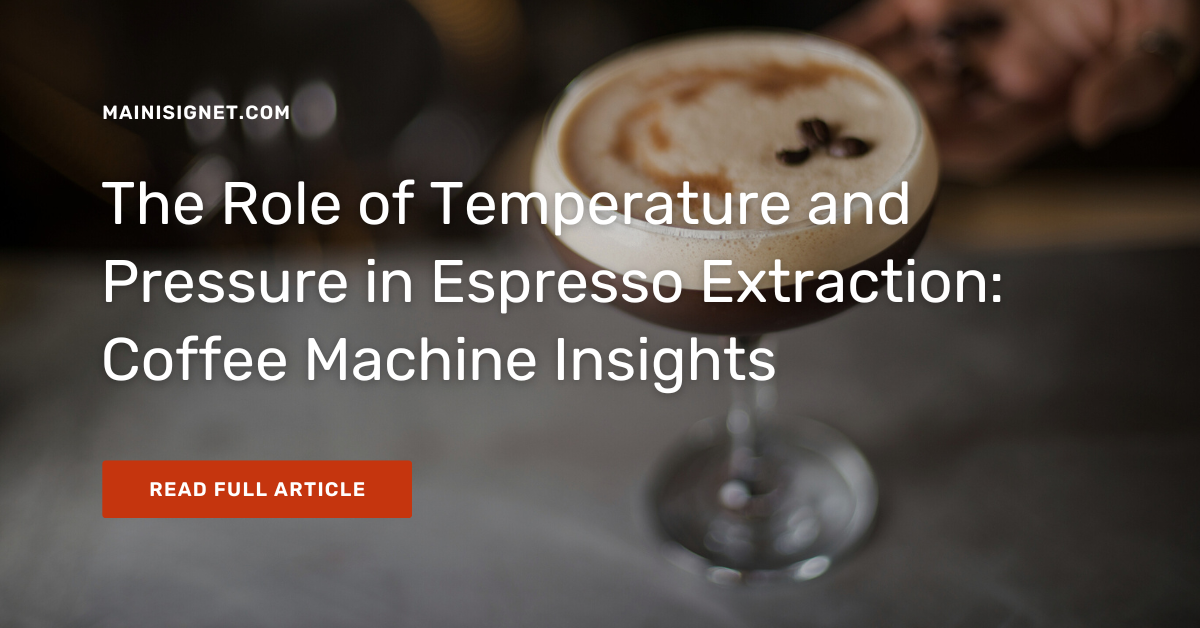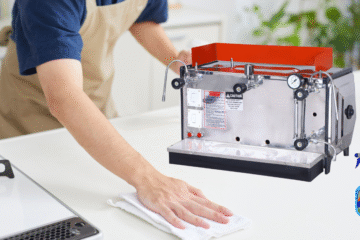Espresso, with its rich flavor and intense aroma, has captivated coffee lovers worldwide. Behind that perfect shot of espresso lies the delicate balance between temperature and pressure during the extraction process.
In this blog post, we delve into the intricate relationship between temperature, pressure, and espresso extraction.
By understanding the science and mastering these variables, you can unlock the full potential of your coffee machine and achieve exceptional espresso at home.
The Science Behind Espresso Extraction
Before we explore temperature and pressure, it’s essential to grasp the basics of espresso extraction.
When hot water passes through finely ground coffee under pressure, it extracts the coffee’s soluble compounds, including oils, sugars, and aromatic compounds.
These elements combine to create the complex flavors and characteristics unique to espresso.
Temperature: Finding the Sweet Spot
Temperature plays a critical role in the extraction process. The ideal range for extracting espresso flavors is typically between 195°F and 205°F (90°C to 96°C).
At higher temperatures, the extraction becomes more rapid, resulting in increased bitterness. Conversely, lower temperatures can lead to under-extraction and a lack of flavor.
Several factors influence temperature control in coffee machines. Modern espresso machines are equipped with advanced heating systems and thermoblocks that maintain stable temperatures.
However, variables such as ambient temperature, machine design, and preheating can impact the consistency of the brew temperature.
It’s crucial to ensure that your machine provides accurate and stable temperature control for optimal espresso extraction.
Pressure: Balancing Extraction and Crema Formation
Pressure is another vital factor in espresso extraction. The recommended pressure range for extracting espresso is typically around 9 bars (130 psi).
This pressure forces hot water through the coffee grounds, extracting desirable compounds while leaving behind undesirable flavors and substances.
Apart from extraction, pressure also plays a crucial role in the formation of crema—the rich, golden foam that crowns a well-executed espresso shot.
The right pressure helps emulsify oils and gases, creating the velvety crema that contributes to the overall espresso experience.
Adjusting pressure allows baristas to control extraction time and influence the flavor profile of the espresso.
Lower pressure may result in a longer extraction time and a sweeter, more balanced cup, while higher pressure can yield a bolder, more intense flavor. Fine-tuning pressure enables baristas to craft espressos that cater to individual preferences.
The Impact of Temperature and Pressure on Espresso Taste
Temperature and pressure variations directly affect the taste of espresso. Temperature fluctuations influence acidity, bitterness, and sweetness.
Lower temperatures tend to emphasize acidity and brightness, while higher temperatures enhance bitterness.
Achieving the optimal temperature range helps strike a harmonious balance between these elements, resulting in a well-rounded and enjoyable cup of espresso.
Pressure influences the mouthfeel, body, and crema thickness. Higher pressure can produce a denser and fuller-bodied espresso, while lower pressure may result in a lighter, more delicate mouthfeel.
Additionally, the right pressure contributes to the formation of a velvety crema, which adds to the visual appeal and overall experience of the espresso.
Understanding Espresso Machine Variables
To harness the power of temperature and pressure, it’s essential to understand the variables present in espresso machines.
Temperature control mechanisms vary, ranging from simple thermostats to sophisticated systems like PID controllers. PID controllers excel in maintaining temperature stability, ensuring precise and consistent extraction.
Pressure regulation systems, such as pumps or levers, maintain the desired pressure during extraction.
Different types of espresso machines, such as manual, semi-automatic, and super-automatic, have varying temperature and pressure capabilities.
Familiarize yourself with the capabilities and features of your specific machine to optimize its performance.
Calibration and Optimization Techniques
Calibrating your espresso machine is crucial for accuracy in temperature and pressure. Regular calibration ensures that the machine operates within the desired range, resulting in consistent extraction quality.
Additionally, optimizing temperature and pressure settings involves experimenting with different variables, such as grind size, brew time, and pressure profiles.
Fine-tuning these factors allows you to achieve your desired flavor profiles and explore the nuances of different coffee beans.
The Barista’s Role: Skill and Artistry
While coffee machines provide the foundation, the barista’s skill and artistry are crucial in achieving optimal espresso extraction.
Monitoring and adjusting temperature and pressure during extraction require precision and attention.
Experienced baristas can use their expertise to make on-the-fly adjustments, ensuring that each shot of espresso is extracted to perfection.
Conclusion
Temperature and pressure are the dynamic duo behind the magic of espresso extraction. Understanding their roles and mastering their control is key to achieving exceptional espresso at home.
By maintaining stable temperature, balancing pressure, and exploring the interplay between these variables, you can unlock the full potential of your coffee machine.
Embrace the art and science of temperature and pressure in espresso extraction, and savor the delight of a perfectly brewed cup of espresso with every sip.




